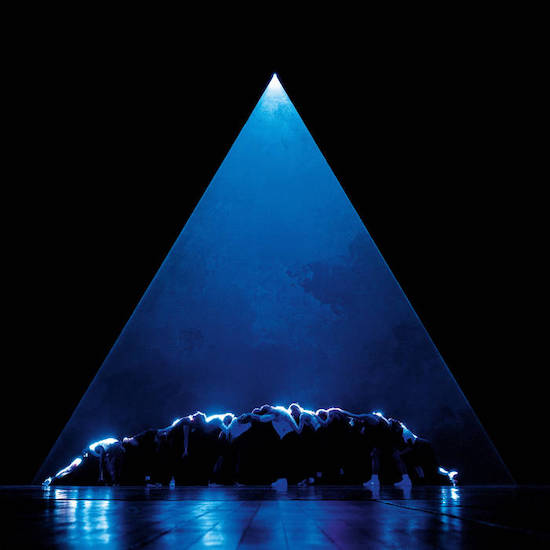From blues to techno via krautrock and black metal, there’s a tension in transportive music with repetitive structures as a base for lines of psychic escape. It’s a conflict that Fly Pan Am shine a magnifying glass on with Frontera as they translate borders, surveillance, and the gross asymmetries of power they represent into sound.
Originally a multimedia collaboration with choreographer Dana Gingras and the Animals of Distinction Dance Company, the Canadian five-piece created music in response to the choreography of light and dancers. The nine tracks on Frontera isolate Fly Pan Am’s part in the project, yet taking the multi- out of multimedia doesn’t dilute the themes seared into the music.
The state’s security apparatus can veer from an inconvenience and a privacy concern to an immovable force brutally dictating your life chances. The stark truth is those of us born in the global north will likely never feel the full cruelty that a border regime embodies. Fly Pan Am’s response is to chart the scale of the pervasive, shape-shifting surveillance machine itself. A band usually marked by deft control of negative space have become startlingly monolithic.
‘Grid/Wall’ is a taught mesh of laser-crafted sound, caustic electronics and barbed guitars lacerating an unrelenting groove. Even on Frontera’s quieter, less rigid movements an ominous presence lurks, from acousmatic dirges to synths which sound more dental than musical.
From titling an album N’ecoutez pas (‘Don’t listen’), to the glitched meta funk of Ceux qui inventent n’ont jamais, Fly Pan Am have always wryly interrogated rock music convention in a way somewhere between high art and pranksterism. Formulaic structures treated as containers to fill with unfamiliar contents, momentum as something to be gently nudged off course. Frontera’s stand-out tracks, ‘Parkour’ and ‘Parkour 2’ see the band push at the limits of the motorik, interrogating the slim line between levitation and enclosure, escapist transcendence and marching song. On ‘Parkour’, the denouement is harrowed screams breaching a kosmiche crescendo, the human tearing at the barriers of the digital panopticon. On ‘Parkour 2’, it’s a choir, hitting a moment of arresting beauty against the machines’ rhythms. Michael Rother compared Neu!’s music to water, but Fly Pan Am burst the river’s banks.


